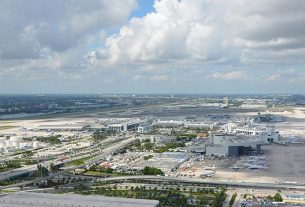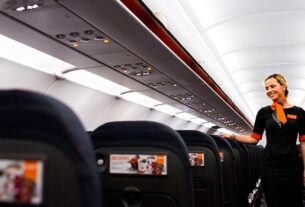United Airlines is reducing its domestic flight schedule and retiring 21 aircraft earlier than planned amid declining demand for U.S. travel and growing international momentum—particularly across the Asia-Pacific region. The moves come as the carrier braces for potential economic turbulence and adjusts to evolving travel patterns in 2025.
The airline will reduce U.S. domestic capacity by 4% later this year, a strategy aimed at optimizing performance during peak travel periods while cutting costs where demand has softened—especially outside of morning and evening “golden hours.”
Off-Peak Weakness Drives Cuts
United is pulling back on lower-margin flights such as red-eyes and early morning departures. Routes heavily dependent on government travel, which CEO Scott Kirby says has declined by about 50%, are being reassessed or eliminated.
“We saw the weakness magnified on off-peak flights,” United’s Chief Commercial Officer Andrew Nocella told analysts, noting that revenue during these hours is typically 30% lower, but widened to 40% in Q1 2025.
The airline will also reduce narrowbody aircraft utilization by 2%, and accelerate the retirement of 21 planes, first mentioned during its March update, to further streamline operations.
Asia-Pacific Leads International Strength
While domestic revenues lag, United reported strong international performance—especially across Asia-Pacific routes, where unit revenue exceeded expectations. The airline cited continued demand recovery and strength in premium cabins as key drivers.
This aligns with broader industry trends showing long-haul international travel outpacing domestic segments in the post-pandemic recovery.
Two Scenarios for 2025 Outlook
In a rare step, United issued a dual-track earnings forecast for 2025, reflecting economic uncertainty. If travel demand holds steady, the airline expects earnings between $11.50 and $13.50 per share. Under a potential recession scenario with a 5% revenue dip, earnings could range from $7 to $9 per share.
Executives said even the lower-range scenario would mark a milestone: United’s first-ever profitability during a recession, underpinned by strong brand loyalty and demand for premium services.
Strategic Shift Ahead
United’s forthcoming Q4 schedule will emphasize high-yield international markets and optimize domestic routes to align with profitable time slots and travel patterns. The shift underscores the carrier’s intent to balance operational efficiency with international growth, especially in regions where travel has rebounded faster.
The airline’s evolving strategy reflects the broader aviation industry’s need to respond dynamically to fluctuating demand, economic conditions, and passenger expectations.
Sources:
- United Airlines Earnings Call, Q1 2025
- U.S. Department of Transportation (DOT) Reports
- Public statements by CEO Scott Kirby and CCO Andrew Nocella
United Airlines Boeing 787-10 Dreamliner Picture on Wikimedia by MarcelX42



